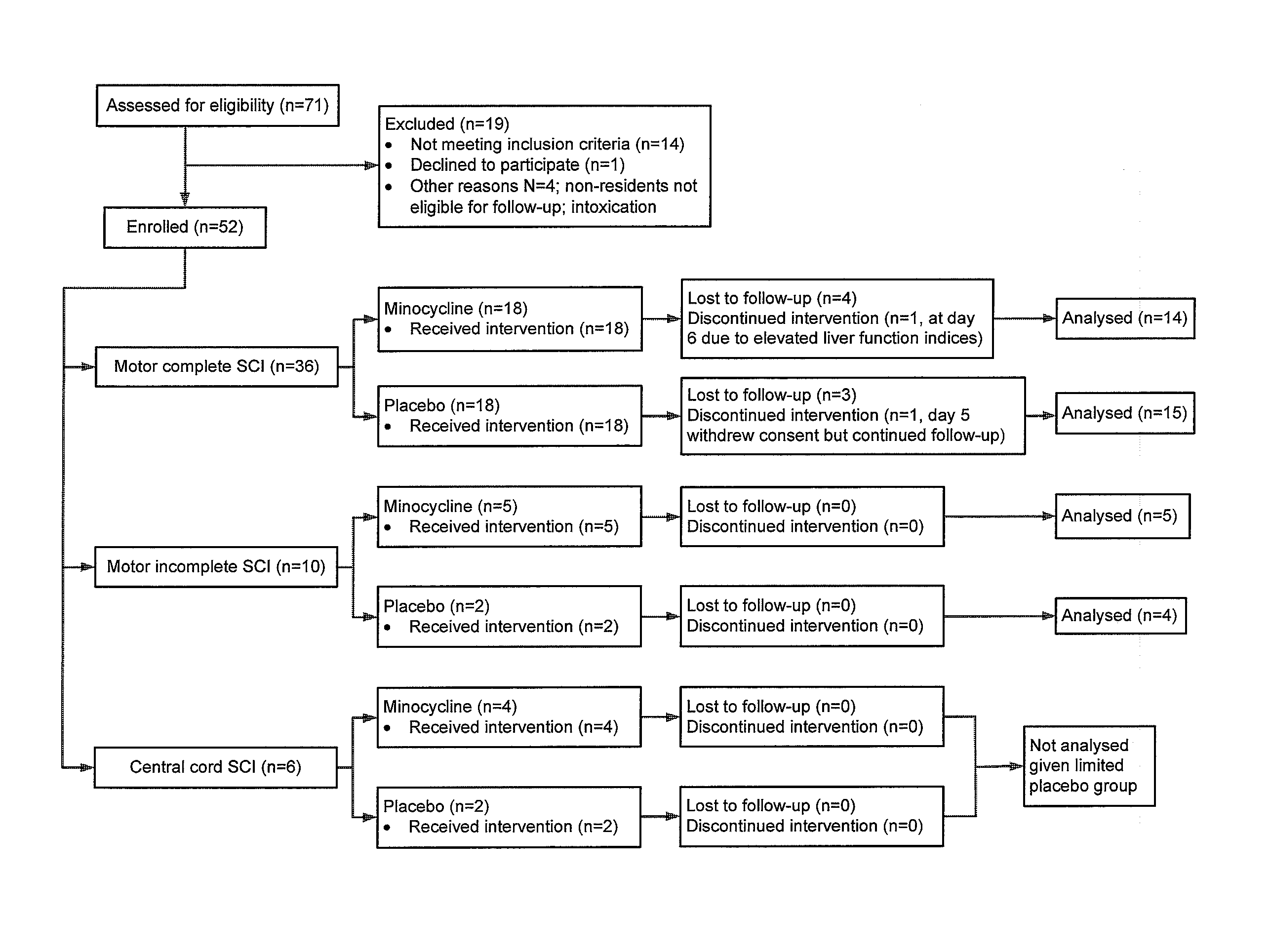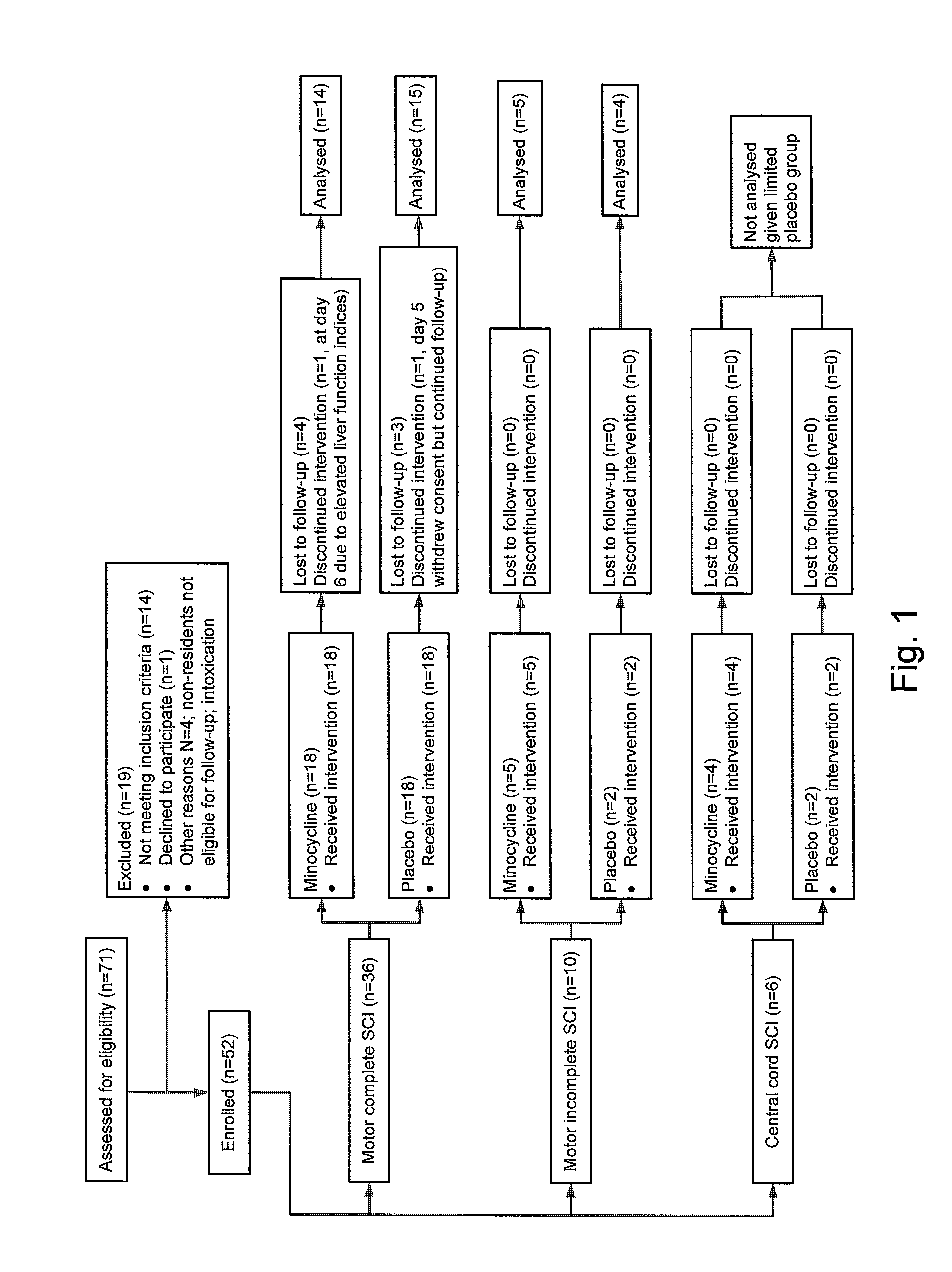Use of minocycline for therapeutic treatment of acute spinal cord injuries
- Summary
- Abstract
- Description
- Claims
- Application Information
AI Technical Summary
Benefits of technology
Problems solved by technology
Method used
Image
Examples
example
Materials and Methods
[0073]The research protocol disclosed herein was approved by the University of Calgary Conjoint Health Research Ethics Board. Between June 2004 and August 2008, all subjects presenting with motor deficit secondary to acute traumatic SCI to the Spine Service at the Foothills Medical Centre in Calgary, Calgary, Alberta, Canada, were immediately identified to the principal investigators and were assessed and screened for this trial (Clinical Trials Gov. Identifier No. NCT00559494). Those within 12 h of injury who met other inclusion criteria (Table 1) were offered enrolment.
TABLE 1Inclusion and exclusion criteriaInclusion criteriaExclusion criteriaAge 16 or over;Tetracycline hypersensitivity;SCI with ASIA level between C0 andElevated liver function tests (AST, ALT,T11, and resulting in a detectable changealkaline phosphatase, or total bilirubinin the ASIA motor assessment;greater than 2 times the upper limit ofEnglish speaking subject able to providenormal);informe...
PUM
 Login to View More
Login to View More Abstract
Description
Claims
Application Information
 Login to View More
Login to View More - R&D
- Intellectual Property
- Life Sciences
- Materials
- Tech Scout
- Unparalleled Data Quality
- Higher Quality Content
- 60% Fewer Hallucinations
Browse by: Latest US Patents, China's latest patents, Technical Efficacy Thesaurus, Application Domain, Technology Topic, Popular Technical Reports.
© 2025 PatSnap. All rights reserved.Legal|Privacy policy|Modern Slavery Act Transparency Statement|Sitemap|About US| Contact US: help@patsnap.com



